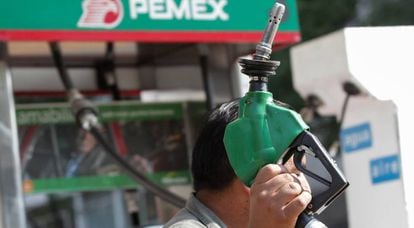Rising gas prices sour Christmas holiday for Mexicans
Politicians, business leaders and consumers mobilize against a proposed hike of between 14% and 24%

A 14% to 24% hike on gas prices has stirred up a country that was dozing through the traditional comforts of the Christmas season. Mexicans have taken to social media to express their outrage and organize protests at the measure, with opposition parties, business leaders and consumers taking a stand against the hike, which threatens to raise inflation and slow down economic growth, independent economists have told EL PAÍS.

“Inflation will reach 5% mid-year and it will go down to 4.6% at the end of 2017,” says Gabriela Siller, director of economic analysis at Banco Base. According to Siller, higher prices are part of a long list of inflationary factors, including “the uncertainty about the arrival of Donald Trump and the future of the North Atlantic Free Trade Agreement (NAFTA), the depreciation of the peso, raising the minimum wage and rising electricity costs.” Growth will stagnate at between 1.2% and 1.5% in the coming year, she adds.
Besides higher prices, there are shortages in parts of the country, leading to long lines at gas stations
Gerardo Esquivel, a lecturer at Colegio de México, says the Bank of Mexico will raise interest rates gradually in order to mitigate inflation. “Though it might be allowed to break through the 4% mark, the size of the interest-rate hike will depend on whether the Central Bank manages to convince itself that this will be the only increase on fuel,” Esquivel explains. 2017 will be a very difficult year “because inflation will add to a 2% cut in public spending.”
Besides higher prices, there are shortages in the interior of the country, leading to long lines at gas stations.
Politicians, businesses and consumers have manifested their opposition on social media and announced a gasoline boycott for the first three days of the year. The most forceful voice on the left was Alejandra Barrales, national president of the Democratic Revolution Party (PRD), who said the government is combining all the factors necessary for social unrest. On the other side of the aisle, conservative Ricardo Anaya from the National Action Party (PAN), said years of negligence at state oil firm Pemex have forced Mexico to import 54% of the gasoline it consumes.
Politicians, businesses and consumers have manifested their opposition on social media
But the most accurate criticism came from presidential candidate Andrés Manuel López Obrador, and he only had to dust off a video he taped months ago in which he warned the country of rising gas prices – even though the federal government was pushing the opposite message, specifically that energy reforms and consequent liberalization of Pemex would lead to lower prices. López Obrador said gas prices would rise by 26% during the Peña Nieto administration, while minimum wages will grow by less than 10%.
President Enrique Peña Nieto proposed floating gasoline and diesel prices starting in January 2017, but last week Mexico’s Energy Regulatory Commission published a plan to remove price controls gradually throughout the next year, starting in March with the industrial regions closest to the US-Mexico border.
The reasons behind the decision to float prices and its implementation were so confusing to Mexicans that the government has published a video to explain how it determines new gas prices. According to Treasury Secretary José Antonio Meade, prices will remain competitive given that gasoline in Mexico “is a little more expensive than in Texas, half the price in Uruguay and cheaper than in Brazil, Chile and Central America.”
English version by Dyane Jean François.












































